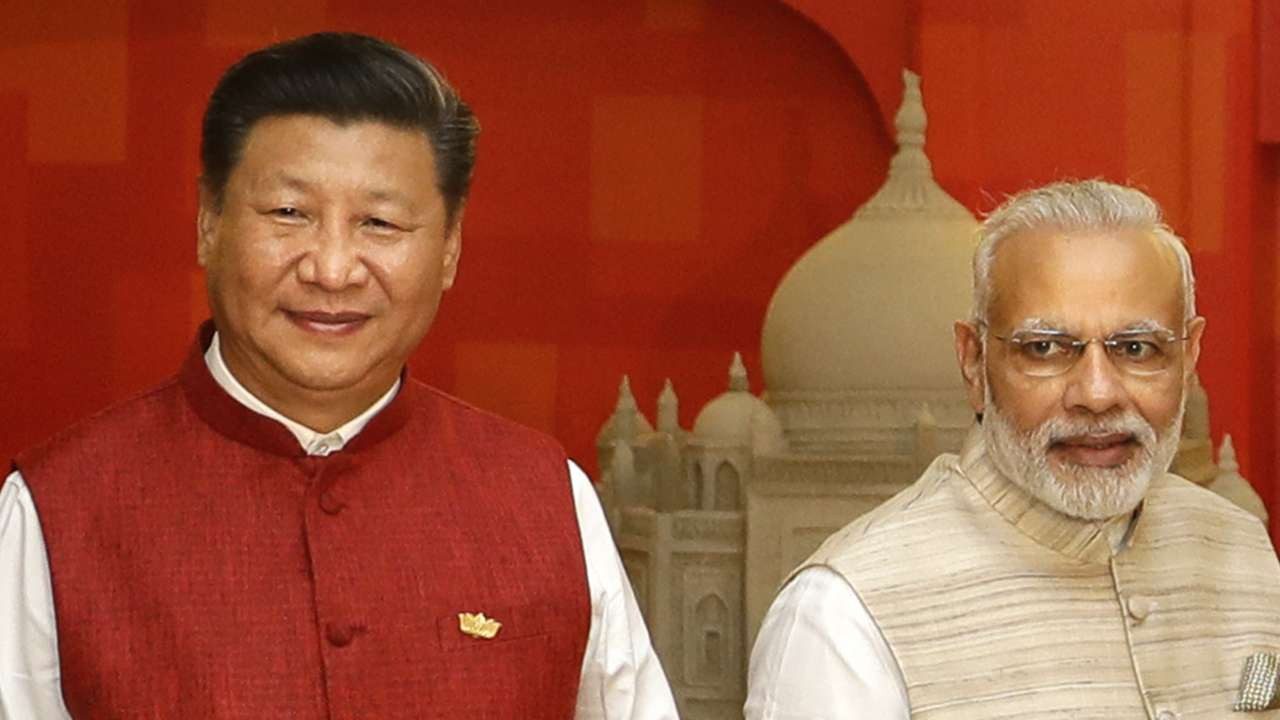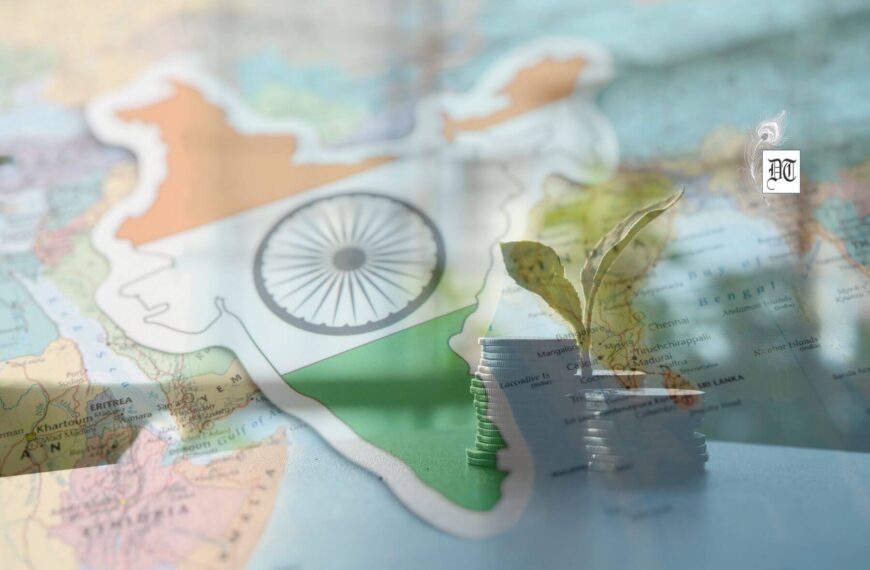India and China can no longer remain cut away from each other on the great divide of the mighty Himalaya. A cursory glance at geopolitical theatres of the absurd would demonstrate how fragile relationships are shaping up. Here’s an analysis, for Different Truths.
India’s Prime Minister Narendra Modi and China’s President in perpetuity Xi Jinping summit parleys sans aide but with interpreters in Wuhan on April 27-28 to take advantage of their mutual chemistry in cementing bilateral relations have not come a day too soon. Soon after Modi’s ascension to the premiership in 2014, he made no bones about his globe-trotting intentions to befriend as many nations as possible during his tenure, though many a critic poured scorn and bile at cultivating friendship across the board in the universe and at enormous expense. In his initial days, Modi showed exceptional warmth to Xi and ensured that the first visit of the Chinese leader to India a great success by taking him to his own state Gujarat to hold a sort of retreat talk where both them disported themselves on a swing at the park on the Sabarmati’s riverfront. The world saw the amazing bonhomie of the leaders of the two giant nations of Asia, which captured the imagination of more than a billion people in their respective country by promising to usher in the pride and heritage of their country’s studded history and glory of the bygone centuries.
Despite the exceptional warmth and amity established between the two strongly individualist leaders, subsequent developments in both the countries did not help blossom the cooperative spirit and carry forward what their combined might could demonstrate to the world, which already construed the current century as Asia’s, much ahead of the last decade of the last century! There remains no dearth of issues to keep the relations hot that have no doubt led to tensions or what diplomats elliptically dub perpetual pinpricks to spoil the party. They range from boundary tensions, the Nuclear Suppliers Group membership issue or India’s opposition to the Belt and Road Initiative (BRI) as the latter impinges on the sovereign concerns of participants without providing them any respite.
In a world where superpowers and hegemonic designs no longer hold sway with many a nation possessing nuclear capability, the absence of maintaining communication channels to talk to friends and foes through friendly foes is but risky. India and China can no longer remain cut away from each other on the great divide of the mighty Himalaya. A cursory glance at geopolitical theatres of the absurd would demonstrate how fragile relationships are shaping up. With U.S President Donald Trump showing unrelenting gall at China for trying to sway the whole world through its soft and smart powers, the former made a somersault of the sort to woo the Middle Kingdom when it came to dealing with Russia and North Korea. In spite of singling out Beijing for adverse trade balance against the US and imposing anti-dumping duty on steel and aluminum, with China retaliating with a raft of tariff measures on American goods, both the US and Chinese leadership have kept their bilateral bonhomie and cooperative spirit separate when the chips are down to find a solution to major crisis or problems plaguing the world at large. Even as the new U.S legislation, CAATSA (Countering America’s Adversaries Through Sanctions Act) to slap sanctions on any company engaging with Russia in the defence or energy sector is exacting pressure on Moscow, the U.S has gone soft on China with a recent tweet by President Trump appreciating Chinese President Xi Jinping’s “kind words on tariffs and automobile barriers and “his enlightenment on intellectual property and technology transfers”.
It needs to be borne in view that China’s marvelous growth in recent years has been driven mostly by technology catch-up and investment. As Prof. Kenneth Rogoff wrote in a Project Syndicate column recently, China’s gains on the technological domain “still come largely from the adoption of western technology and in some cases, appropriation of intellectual property”.
China believes in investing in many infrastructure projects across the world through its BRI, taking equity stake in far-off land to explore oil, minerals and metals and grow agricultural produce and vegetables and fruits not only for its domestic consumption but also to third country exports in a bid to live up to its image as not only the greatest Asian nation but also the one that aspires to be the world’s greatest. This has been made easier following the end of the USSR in the 1980s, the fall of the Berlin Wall, the collapse of the Washington Consensus in the wake of the 2008 world financial meltdown, the retreat of liberal values in countries like Britain and America where cost-benefit analysis is being done to promote global peace and maintain the momentum of development in places where development had not made proper and substantial strides to make a difference to the quality of life to millions of the poor.
In a provocatively titled book China’s Asian Dream, Tom Miller argued that by degrees China’s burgeoning geopolitical muscle is starting to match its economic might as it went about fostering a web of informal alliances ‘lubricated by Chinese cash’. Chinese leaders’ talk of fixing, ‘rejuvenation’ or ‘revival’ to restore what has been construed in classical Chinese cosmology that it sat at the centre of the world: its very appellation, Zhongguo, literally means ‘middle country’. No wonder and rather ironically most of the western writers call China the Middle Kingdom even when monarchy had given way to democracy elsewhere.
Though bilateral relationship does matter for peace and stability in the Asian continent, it is in India’s interest to be pushing Beijing for more focused trade opportunities so that the bulging trade deficit New Delhi suffers from China could be pruned to a manageable level. As Modi has travelled the extra distance to be amiable with Xi, the trade relationship had not got much of a boost as India’s trade deficit with China had been steadily growing up from $ 48.45 million in 2014-15 to $ 52.69 million in 2015-16 to $ 51.10 million in 2016-17 and to a staggering $ 47.11 million during the first nine months of the fiscal year 2017-18.
As India is wrestling with entering into the Regional Comprehensive Economic Partnership (RCEP) which is a proposed free trade agreement (FTA) centering on ten ASEAN members and includes their six FTA partners viz., India, Australia, China, Japan, New Zealand and South Korea, India needs to be wary of how much reduced dutiable items would deluge the domestic market from the Middle Kingdom once the RECP is in place. It is time Indian leadership at the highest level demonstrated the potentials to make Chinese purchase more of Indian goods and invest in India by way of reparation for the skewed commercial relationship that is patently in favour of China right now. Merely reiterating our reservation against BRI as made out by Foreign Minister Sushma Swaraj at the Shanghai Cooperation Organization (SCO) Foreign Ministers meeting would only irritate the Chinese as they deem this initiative and the Asian Infrastructure Investment Bank (AIIB) as their signature projects to build goodwill in the world. Wisdom lies in extracting gains in the relationship without affecting any embitterment by running down the pet projects of one’s neighbour.
G. Srinivasan
©IPA Service
Photo from the Internet





 By
By

 By
By
 By
By